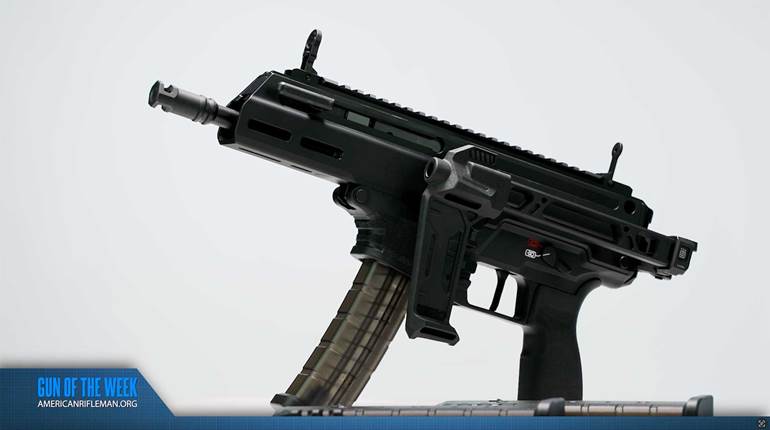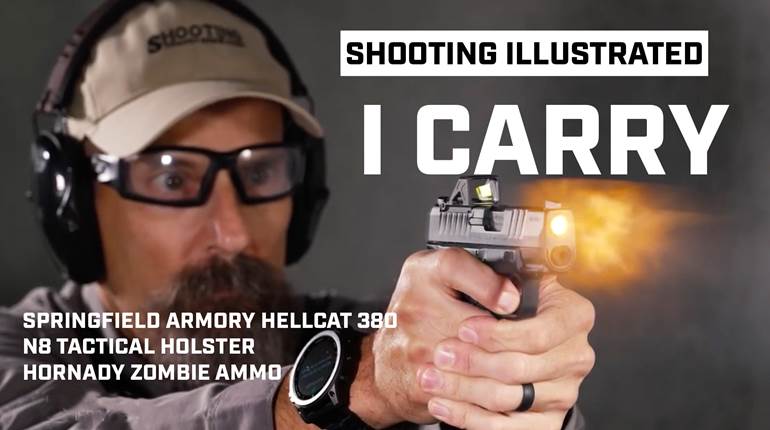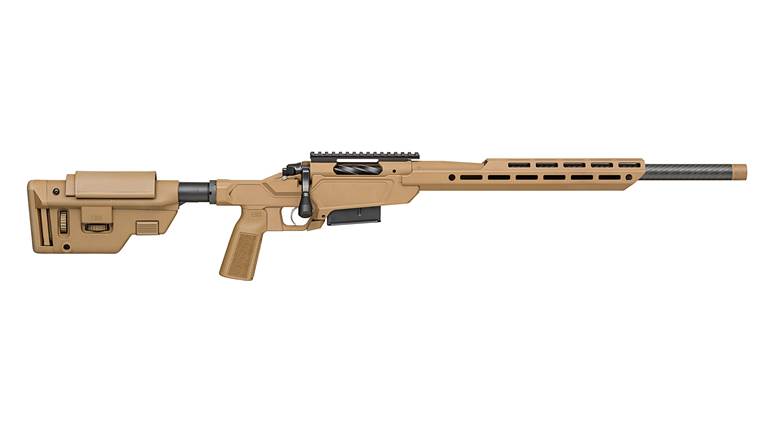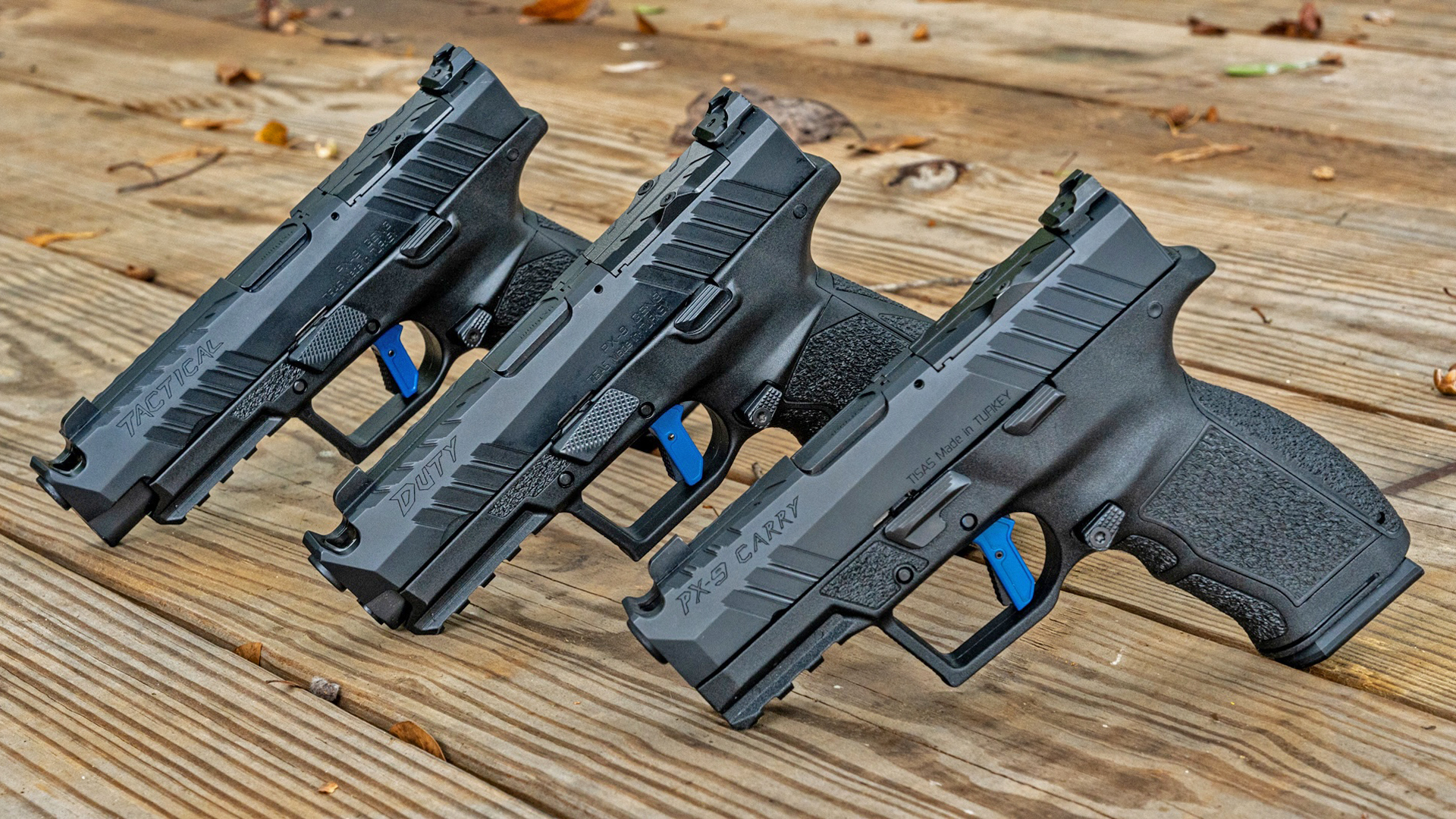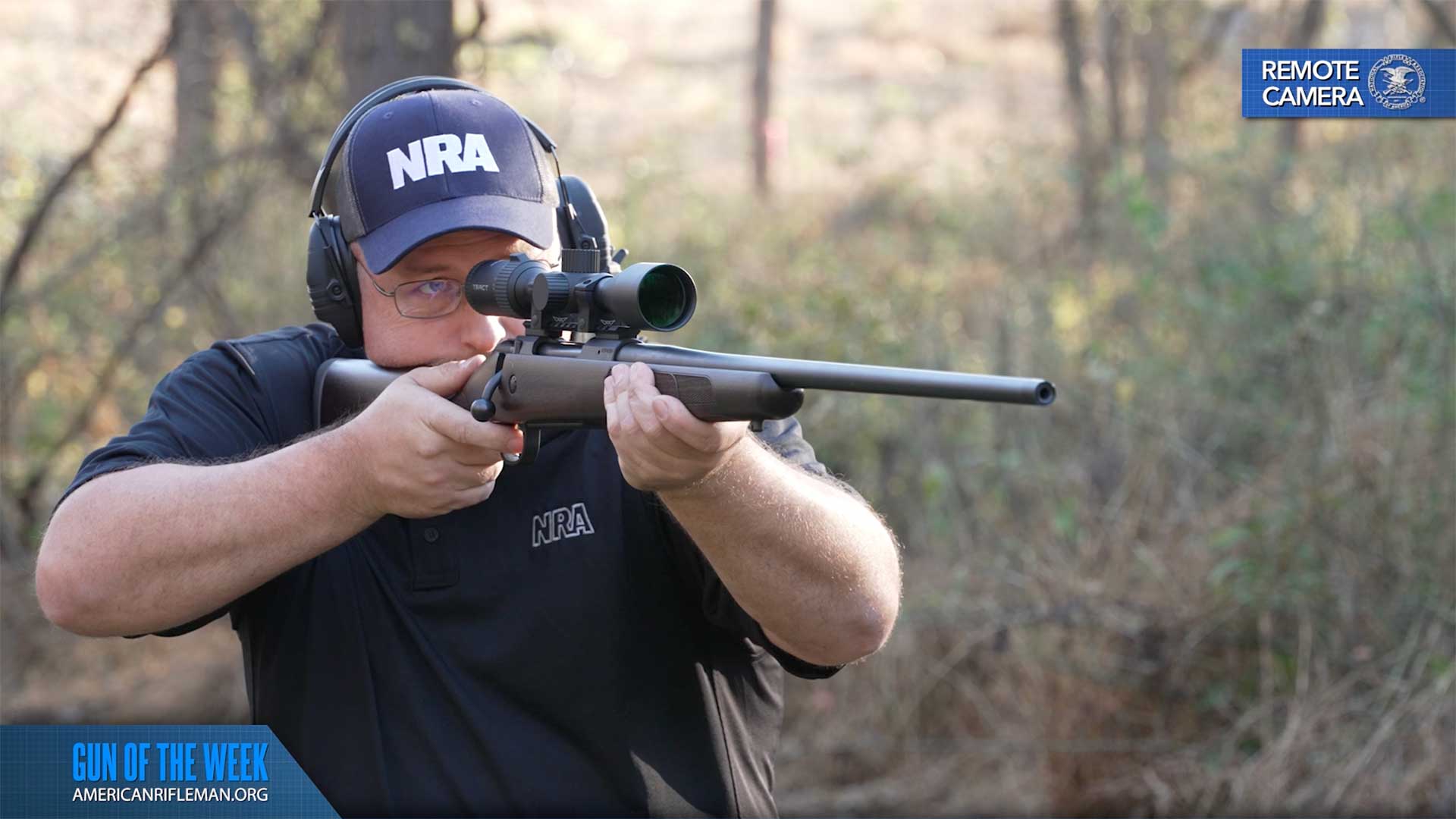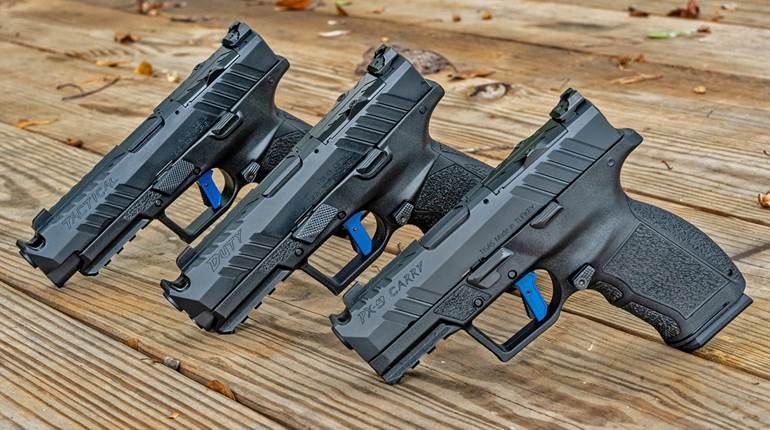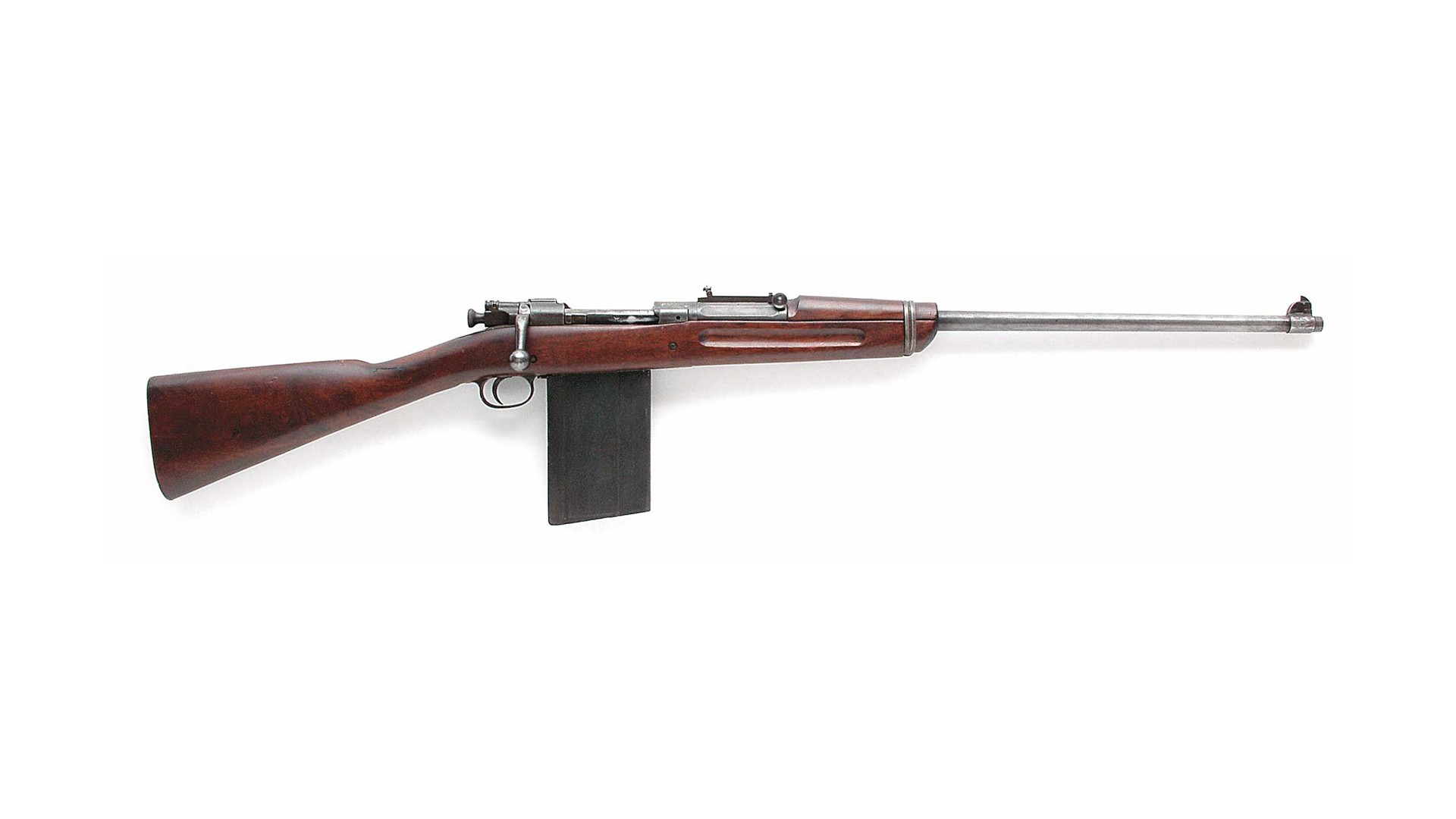
This article, “Stripped for Air Service: The Air Service ’03 Springfield,” appeared originally in the October 2004 issue of American Rifleman. To subscribe to the magazine, visit the NRA membership page here and select American Rifleman as your member magazine.
Perhaps the most venerable United States military rifle of all time is the “U.S. Rifle, Caliber .30, Model of 1903,” better known to several generations of Americans as simply the Springfield “Oh-Three.” The ’03 was the premier U.S. service rifle from the time of its standardization in 1903 until the adoption of the M1 Garand rifle in 1936. Even after the M1 came on the scene, large numbers of M1903 rifles remained in front-line use well into World War II.
During the ’03’s long tenure of service, many variants and modifications of the rifle were developed. These ranged from the well known, such as National Match rifles and several types of sniper rifles, to the rare and obscure, such as the version with the semi-automatic Pedersen Device attachment and the Cameron-Yaggi Trench Periscope Rifle. Among the most interesting, rarest, and least-known variants is the Air Service ’03.

Developed during World War I, the Air Service ’03 was essentially a standard M1903 service rifle with a specially made shortened stock and handguard, simplified rear sight, and a 25-round non-detachable extension magazine. The rifle was not intended for infantry use and was described in a 1918 Ordnance Department Report as “… Stripped for Air Service.”
While the existence of the Air Service ’03 has been well established, the intended use for which the rifle was designed remains the subject of some conjecture and speculation even today. Several theories regarding the intended purpose of these arms have been proposed, including the idea that the Air Service rifles were to be utilized as a form of rudimentary armament for personnel in observation balloons. Such balloons were widely used in World War I for artillery spotting and similar purposes. It has also been suggested that the rifles were to be used as defensive armament for two-man fighter or observation aircraft. Still another theory is that the rifles were intended to be carried in aircraft as personal defense arms in the event a pilot was forced down behind enemy lines and had to defend himself.

After considering all the stated theories, the latter application is clearly the most plausible. The first theory can probably be dismissed when one considers that the usefulness of a bolt-action rifle against an enemy fighter airplane, while in a swaying observation balloon basket, is questionable. The theory about using the rifles as aircraft armament is also rather unlikely. Machine guns for aircraft had proven their effectiveness several years before development of the Air Service ’03, and, in any event, a bolt-action rifle would be a very poor substitute against an enemy plane armed with machine guns. On the other hand, a full-power, service-type rifle with which a downed aviator could defend himself seems to be a much more logical concept. Since a pilot would not be wearing a cartridge belt, the 25-round extension magazine used with the Air Service rifle would have provided an adequate supply of ammunition self- contained in the rifle and ready for immediate use. Even though relatively minor, the weight savings of the shortened stock, and elimination of unnecessary sling swivels and other hardware also support the idea that the rifle was intended for aircraft use where any sort of weight reduction, slight as it may have been, would have been viewed as an asset.

This theory is bolstered by several Ordnance Department documents, including the original Springfield Armory blueprints, which identify the gun as “U.S. Rifle, Model of 1903, Altered for Aircraft Use.” Along these same lines, an early 1918 Springfield Armory report on the 25-round extension magazine stated that the item was expected to be adopted “… for aeroplane … use.” The wording in these two documents should dispel the apparently erroneous balloon armament theory since balloons were not generally referred to as aircraft or aeroplanes.
An Ordnance Department memo dated March 20, 1918, requested that the Chief of Ordnance ship a prototype Air Service rifle to Washington, D.C., and subsequently to France, for testing under combat conditions. The following day, a memo directed Springfield Armory to calculate the time required to manufacture 2,000 rifles of this type. On April 29, 1918, an Ordnance Department communiqué confirmed that the prototype Air Service rifle was delivered to Col. H.H. Arnold (better known during World War II as General Hap Arnold). General John Pershing requested that 825 Air Service rifles be supplied to the Allied Expeditionary Force no later than June 1, 1918. The U.S. Army Signal Corps’ Control Board also met in June 1918 to evaluate the Air Service rifle and suggest modifications.

During that period, the Signal Corps was the branch of the U.S. Army responsible for the procurement of aircraft and related equipment. The Control Board suggested a few modifications, primarily related to minor changes in the rear sight. These suggestions were agreed to by Springfield Armory, and production began on the Air Service rifles requested by Gen. Pershing.
The Air Service ’03 used the same receiver, barrel, bolt and front sight as the standard M1903 service rifle. The stock, handguard and barrel band were specially made and were not modified standard components. The solid (not split) barrel band was secured to the stock by a single wood screw. The standard M1905 rear sight was modified by cutting down the sight leaf, altering the sighting notch and fixing the drift slide at the 100-yd. increment by means of a machine screw through the peephole. The 25-round magazines used with the prototype Air Service rifles were reportedly made by the National Blank Book Company. The extension magazine replaced the regular floorplate of the ’03 and was fixed (not detachable).

Original Air Service rifles have been noted with serial numbers ranging from 856709 to 862069, but numbers in close proximity on both sides of this range are likely. Barrel dates were in the early to mid-1918 period. As reflected in Ordnance Department records, 908 Air Service rifles were manufactured and shipped from Springfield Armory to France on June 25, 1918. Apparently it was determined that an additional 83 Air Service rifles were required beyond General Pershing’s request for 825 rifles.

The precise date that the Air Service rifles arrived in France, or their initial disposition, is not known. On November 5, 1918, a report by Lt. Col. H. J. Malony, Head of the Aircraft Armament Service Headquarters, stated that 680 Air Service rifles were in storage at Issur-Tille, France. The difference between the 908 rifles shipped in June and the 680 in storage in November has not been accounted for. Lt. Col. Malony’s report stated that the rifles “… were definitely not needed as armament for observers in aircraft … .” This comment seems to confirm the fact that the rifles would not be suitable for aircraft armament purposes. Col. Maloney suggested that the Air Service rifles could perhaps be used as personal armament for couriers and similar personnel, but it has not been determined whether the rifles saw any such use. It is known that 25 Air Service rifles were employed for testing purposes by the infantry to evaluate the suitability of the 25-round extension magazine. In addition to being used with the Air Service rifle, the extension magazine was utilized with the rare Cameron-Yaggi Trench Periscope Rifle. Relatively large numbers of the 25-round extensions magazines were also manufactured for use with standard ’03s for trench warfare, but few, if any, were actually issued for that purpose before the war ended.
The Springfield Armory report for Fiscal Year 1920 stated that 910 rifles “… stripped for Air Service” had been manufactured, which indicates that two examples were made in addition to the 908 Air Service rifles shipped to France in June 1918. This figure almost certainly represents the total production of Air Service ’03s. After the conclusion of World War I, the Air Service rifles sent to France were returned to the United States and placed in storage until a determination as to their final disposition could be made.

By the mid-1920s, it was decided to convert some to standard service rifle configuration and to destroy any rifles not converted. As reflected in a June 19, 1925, Ordnance Department memorandum, 139 Air Service Rifles were converted to service rifle configuration at the Raritan (N.J.) Arsenal. The memo stated: “[I]nformation is furnished that the modification of the caliber .30 Rifles, altered for aircraft use … required re-stocking, substituting lower band complete, assembling upper band complete, and substituting movable stud and front sight leaf, U.S. Rifle cal. .30, M’03 for the movable stud and front sight leaf, for aircraft use. One hundred and thirty-nine (139) of these Rifles have been modified as stated above and are now available for issue as U.S. Rifles, caliber .30, M-1903, at a cost of $168.38.”
The remaining Air Service Rifles were likely either destroyed or converted at other ordnance facilities. The stock, handguard and barrel band of the Air Service rifle were used to assemble the first experimental rifles tested with a proposed Winchester sniper telescope. This scope was eventually adopted as the Model of 1918 and was slated for use with a modified M1917 rifle, but it was never standardized or manufactured in quantity. It has been suggested that some of the Air Service rifles were utilized in Navy dirigibles in the 1920s and 1930s, but documentation to verify this has not been discovered.
Surviving examples of original Air Service rifles are extremely rare since virtually all were either converted to regular service rifle configuration or destroyed. Very few of these rifles are in museums, and even fewer are in private hands. There have not been enough original Air Service rifles sold to establish a general price range, but examples are much rarer than either original rod bayonet rifles or Pedersen devices.
While never used in combat, the M1903 Air Service rifle, like the Pedersen device and the Cameron-Yaggi periscope rifle, is an example of how the basic ’03 rifle was modified to meet a specific application that was never envisioned when the original M1903 was adopted.













